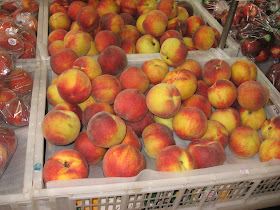



 http://reducefootprints.blogspot.com/
http://workofthepoet.blogspot.com/2009/09/think-green-thursday_10.html
http://reducefootprints.blogspot.com/
http://workofthepoet.blogspot.com/2009/09/think-green-thursday_10.html
One of the ways to enhance a sad polluted area, where broken footpaths and overflowing rubbish bins were eye sores, is to have the support of all parties involved.
The Roy Clements Treeway is one fine example. This is a patch of area owned by Mount Albert Grammar School (MAGS) where Sam currently attends, and managed by Auckland City Council. The creek is polluted and has weeds and when it rains heavily, it floods.
Now it is transformed and is a popular public walkway. I found it last year when I walked to see the different paths Sam can take to his new school.
It is used daily by many MAGS pupils to go to and from school. It has been the focus of complaints by the School and local residents. The St Lukes Environmental Protection Society have campaigned to improve this area.
The groups carried out a tree planting program, and also native plants and the regeneration of the wetland area. Now you can see ducks swimming. Landscape experts now encourage people to grow native plants as it is much kinder to the environment.
The St Lukes Environmental Protection Society (STEPS) was incorporated in 2005. Its purpose is to act as a body, giving voice and taking action to protect and enhance the environment and amenities in the St Lukes area.
http://www.meolacreek.org.nz/tag/roy-clements-treeway/
Meola Creek makeover
The banks of Meola Creek in Mt Albert have a new lease of life with over 6,000 native species being planted by enthusiastic volunteers recently.
The volunteers including several Wai Care groups, Morphum Environmental Ltd, Metrowater staff and members of local care group STEPS, planted both sides of the new boardwalk that runs through the Roy Clement’s Treeway.
The ‘treeway’ is named after Roy Clements, a retired Mt Albert Grammar School teacher, who involved students in environmental work at Meola Creek some years ago. Mr Clements participated in the planting activities and explained why he feels passionate about the revegetation and care of Meola Creek, and the importance of community and student involvement in environmental work.
As a result of Mr Clements’ work, there are already some well established native trees, including a beautiful King Fern that will help protect the newer plants.
Auckland City Wai Care Coordinator Melissa Marler says the new plants will help trap contaminants in an area that regularly floods.
“Native grasses including Carex virgata, Carex lessoniana, Cortederia fulvida (toe toe), Cyperus ustulatis were planted along the stream edge with Baumea Articulata, flax, cabbage trees, and kowhai in the wetter areas,” says Melissa.
“The new plants look great and members of the public have commented how much they are enjoying the new raised boardwalk and the plants. “I’m also encouraged to see people out picking up rubbish between the new plants’” she says.






































































